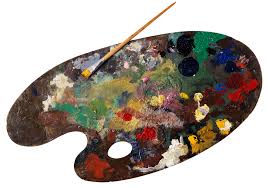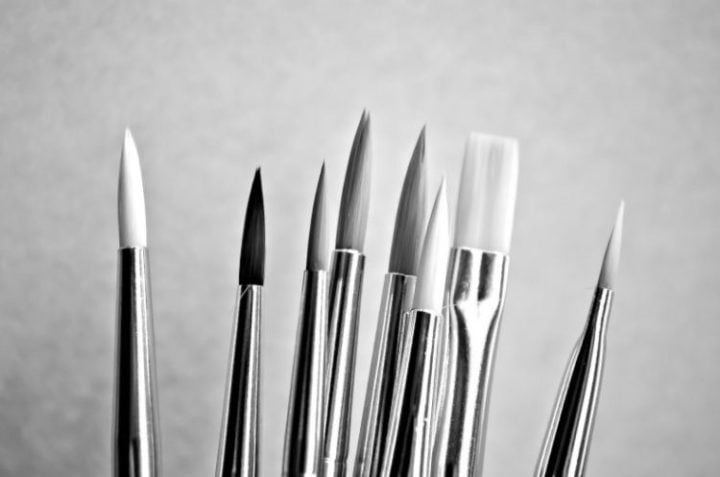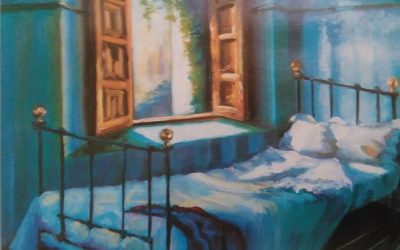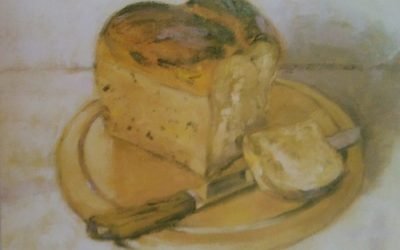Tools and materials needed for oil painting can be very expensive so it is best that in the beginning, you buy just the essential and add the other things you need in time.
Oil Colors
Oil colors are sold mostly in tubes and come in two options professional or artist and amateur or student oil colors. Professional oil colors are of far better quality since the materials used for their production are of better quality. They are made of the finest pigments with a very small amount of oils so that they are very thick and still shiny.
Student oil colors are cheaper than artist ones since they contain less pure pigments than artist ones which are mainly made of pigments. That makes student colors have lesser intensity and brightness. Hoverwer they are good for practice.
Some painters use the combination of those two types of oil colors using artist one for bright tones and student ones for darker tones.
The price of artist colors depends on the pigments used for the production and varies from color to color while the student ones usually have the same price.
Mediums And Solvents
It is possible to use oil colors in their thick form right out of the tube but more often you would want to dilute them a little bit so you can paint easier. You can dilute the paint using just the solvent like turps or odourless mineral spirits or you can use a medium made of solvents and oil.
Solvents
When you use only the solvent to dilute the paint you get a matte finish and the paint drys much faster. If you are painting in closed space turps can cause headaches it is also known to irritate the skin so it is better using odourless mineral spirits or make sure to vent the room you paint in.
Mediums
There are many different oils you can use to create a medium for mixing your paint. The most used medium is one made of linseed oil and turps usually it goes 60% of oil and 40 % of turps. Linseed oil is used because it makes the paint shiny and resistant to cracks while drying.
If you wish to make a thicker paint that drys quicker you can add a little bit of damar varnish into your mixture of linseed oil and turps. You can also purchase already prepared mediums for all painting techniques.
Brushes
There are brushes of many different shapes and made of many different materials that are used for oil painting. Each of them leaves a different trace and you chose them depending on the technique you use. Basically you have to try them in order to know which one suits you the best.
Hog Bristle Brushes
Stiff brushes are good for carrying a lot of paint and adding thick layers of paint on the canvas. Ones that are the best are made of hog hair.
Sable Bristle Brushes
Sable bristle brushes are soft and elastic similar to those that are used for watercolor painting only with longer handles. They are very useful for painting the small details in the final layers and for adding very diluted paint. Sable bristle brushes are expensive so many painters use synthetic ones.
Synthetic brushes
Synthetic brushes are cheaper replacement for natural bristle brushes. They are firm and easy to wash but they lose their shape much quicker than natural ones.
Shapes The Brushes
There are many different shapes of brushes. Round, that has long thin hair that bends inwards on the end. This is the most used shape of the brush because it is easy to cover big surfaces with it but also can be used for painting the fine details.
Flat, that have long hair that can carry a lot of paint and is ideal for adding thick layers of paint and mixing the paint.
Filbert, similar to flat with one difference in the way that on filbert brushes hairs bend inwards on the edges. Filbert brushes are also used a lot since they create many different traces.
Fan, that is made of hog bristles, sable or synthetic and is mainly used for mixing the paint on the canvas on the areas where the very smooth trace is needed.
Decorators Brush
Decorators brushes are cheap firm brushes and are mostly used for adding the first basic layer of paint to the surface and for varnishing.
Sizes Of The Brushes
Each brush is produced in many different sizes where the smallest is 00 and the biggest usually 16. Sizes of the brushes are not standardized and can be different from brand to brand. With natural bristle brushes that are mostly hand made they can even be different in the same series.
The size you will choose for your work depends on the style and the proportions of your paintings. It is better to start with bigger and middle-sized brushes since they cover bigger surfaces and can also be used for small spreads. Use of bigger brushes will also inspire you to use a bolder more artistic approach to painting.
Cleaning Of The Brushes
Good brushes are expensive but if you clean them properly after every use they can last you for many years. Make sure you wash the brushes after every use and never leave them with bristles touching the bottom of the jar with the solvent.
First, remove the paint with a paper towel then rub the bristles with turps or mineral spirits making sure it goes deep in the bristles to clean the paint residue next to the ferrule.
After you clean all the paint wash the brush with lukewarm water and mild soap until it is fully clean. Shake the water of the bristles and form them in their previous shape before you leave it to dry with handle down in a jar.
Before storing the brushes back in their box or holder make sure that the bristles are fully dry.
Pallets
Pallets for oil painting are made in different shapes and sizes out of different materials. Constructed in a manner to suit the needs of a painter. The best pallets are made of the mahogany board but pallets of wooden fibres and pallets covered with melamine are perfectly fine as well.
Try and use the biggest pallet that you can so you can squeeze all the paints that you will use on it and still have enough room in the middle to mix them.
Pallets With The Hole For The Thumb
These pallets are made in a wide range of sizes and are constructed so that the painter can hold them in the hand while painting in front of the easel. They have an opening for the thumb and a dent for the rest of the fingers and you lean the pallet on your forearm. You can find them in three basic shapes rectangular, oval and traditional kidney shape.
Preparation Of Wooden Pallet
Before you use your wooden pallet for the first time you should rub linseed oil in it in order to stop the wood from extracting the oil from your paint. That also helps you with the cleaning of the pallet later on after you use it.
Rub the linseed oil on the both sides of the pallet and leave it to dry for a few days so the oil can totally soak in the structure of the wood.
Expendable Pallets
Expendable pallets are made of paper that is oil resistant and are very useful when you are painting outdoors or for those of you that simply do not like cleaning the pallet.
Improvised Pallets
Many painters prefer using “homemade” pallets which basically be any surface. Not only that you will save money, but you can also choose the size, shape and the material that you prefer.
Any smooth oil-resistant material will do. Piece of glass, old bowls, cups, cans all of that is good to mix the paint in it and you can also cover it with foil in between the sessions so the leftover paint doesn’t dry.

Painting Surfaces
Surfaces you paint on can be canvas, panel or paper. What is important is that the surface is prepared appropriately to prevent the absorption of the oil from the paint because if the surface is to absorb it the paint would lose its binding power and would eventually crack.
Canvas
The most popular surface that is used for oil color painting is a canvas. It can be cotton or linen canvas. Linen canvas is considered to be the best for painting because of its even structure without knots and its durability.
Linen canvas is produced in many different weights and fine, medium and rough texture. You can purchase it already primmed and stretched on a frame or in rolls. Primmed canvas is usually expensive and anyway many painters prefer preparing the canvas by themselves to fit their needs.
A cotton canvas of good quality is a fine enough substitute for linen canvas and is as half expensive. lesser quality cotton canvas is only good for practice since it tends to stretch over time.
Panels And Paper
Panels prepared for oil painting are much cheaper than canvas and are good to be used by those painters that are just beginners. Oil sketch paper is specially prepared for oil painting and has a surface that mimics the surface of the canvas. It is good for painting outdoors or practising painting.
Additional Tools
Oil color painting can be really messy so you need to prepare some jars for solvents, paper towels and clean rags. You might also need a pallet knife for scraping the paint from the pallet in order to clean it or to mix the paint with it on the pallet.
Now that you prepared everything you are ready to start! If you have any questions leave them in the comment section and I will be happy to answer.





0 Comments